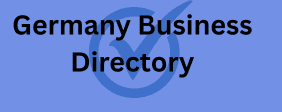First of all, let’s put it in context: inbound marketing can be defined as attraction marketing, where the main difference from traditional marketing is that the customer searches for your business online. For this movement to happen, the company uses robust attraction strategies and tools, and then begins the relationship process, which is personalized.
Inbound marketing actions aim to direct and bingx database the audience about what your company is about, your products, your segment, and how this can solve your customers’ pain points. This is done to give the audience the feeling that your company is a reference in its market, which can guide and influence purchasing decisions.
Companies attract customers using
Relevant content and exploit this through channels such as search engines and social networks. This allows them to measure the number of views, interactions, clicks, purchase conversions, etc.
The goal of investing in inbound marketing is to increase the visibility of your product/service, attract qualified customers in large numbers, provide interesting and relevant content, and optimize the sales process. Thus, through an assertive strategy, the research and purchase process becomes more agile.
In this framework, the stages of inbound marketing are:
- Attraction . People must be “fed” with relevant content, legitimate information and a visual identity that is consistent with your brand, so that the search happens spontaneously. This makes your audience engaged in a way that through:
- blogs that cover topics by niche and theme and with a more informal and personal language.
- This through SEO, a technique that allows you to place your content on the first page of Google. This happens according to your ability to offer internet users the best solution to solve or mitigate the problem that the search.
- It through the link/pay-per click through:
- Search, when purchasing Google Ads keywords;
- Display, when purchasing banners, which are those ads that appear on the side of pages on Google and/or;
- Social networks, whether through the cadence of non-paid posts and content that attracts interested parties, making it possible to segment your target audience.
- Conversion. This is the stage in which visitors to websites/campaigns/pages become leads and potential customers, because they consider moving forward in the purchasing process. There are a number of possibilities to advance this process, including some incentives, such as creating offers, promotional coupons, etc. This is also a stage in which you can invest in the purchase and creation of “Landing Pages”, specific pages that indirectly communicate with the lead to induce them to purchase.
- Relationship. This stage requires include the featur image in your post and a call to action the purchasing journey, until the right moment to make the approach. The approach must be careful so that the customer can move on to the purchasing stage and, consequently, to loyalty, allowing them to remain with the brand for renewal of the purchase or new purchase in the future.
Finally, Evaluation. Digital marketing
Is valuable here because it gives you the possibility of tracing the path taken from research to purchase. This evaluation, over time, forms a pattern and helps to optimize efforts at all stages.
Inbound marketing is a dominant factor in the cnb directory world. The costs are lower than investments in traditional marketing, but it requires time and consistency until the entire process becomes organic and self-sustaining. Until the wheel turns on its own, there are many possibilities for you to test the best practices for your business.
